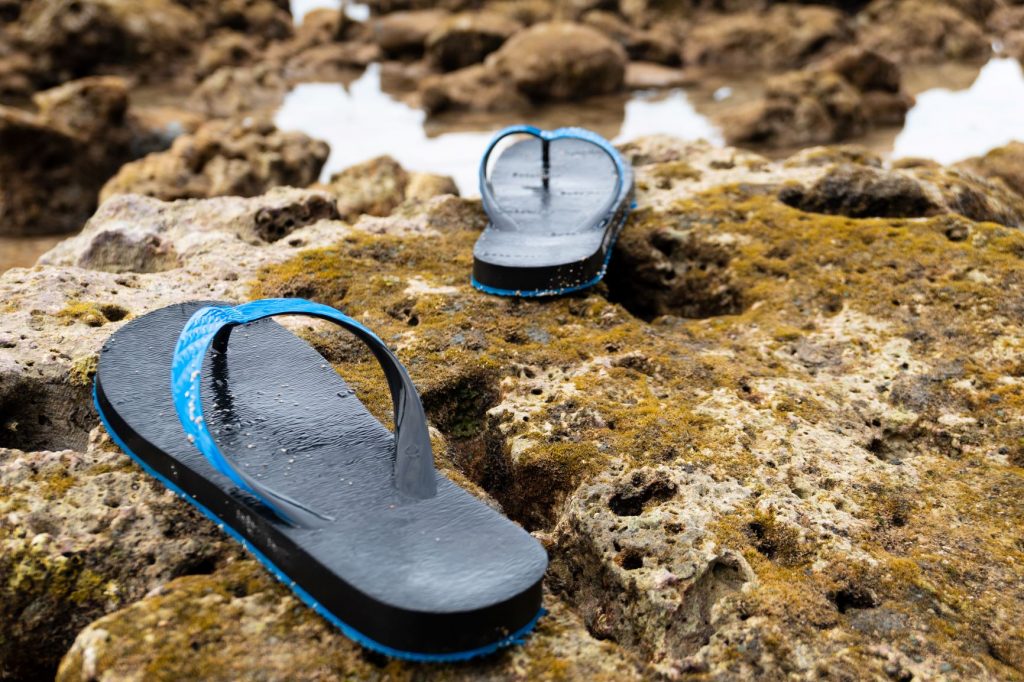Crossing the Alps in flip-flops
Why cables that cost less are not always better
Sascha Mais | 19. May 2021
“The most cost-effective solution that works for the customer is the best!” This has been our philosophy at igus for years, and it has served us and our customers well. I would like to show that the purchase price itself, however, often plays a secondary role. I will use something that I experienced with one of our customers in the past few days as an example. The cables that cost the least are not always the best ones.
The price check
The idea of a price check is not a new one. When we shop privately on the internet, we compare prices, of course. Sometimes we need a very specific product, and we compare prices from low-end providers online. But sometimes we still think that this particular model is still too expensive. We look for alternatives. Let’s take new brand-name shoes, for example. Does the online store have a model that looks similar, but is cheaper?

Not every shoe is the right one for every activity. So it helps when the online shop covers various requirements of potential buyers. The perfect running shoe is not necessarily a good shoe for hiking, nor do we walk around in summer in lined shoes. Price is, of course, another important decision criterion, and it’s the same in the cable business.
We offer a number of different cable types, and we offer them in more than seven different qualities. We always try to give the customer just the cable that optimally meets his needs.
Cost-effective cables thanks to the price check
Our price-check campaign allows our customers to design their own cables and receive price information as part of the process. We examine the customer application closely and assess the individual parameters, including bend radius, expected service life, temperature, travel, speed and acceleration values, etc. Using these data, we select a suitable cable.
The following graph shows how widely cable prices can vary. Here, as an example, is a control cable with a cross section of 4×0.5mm². All of the seven cables shown have the same electrical properties, but vary in structure, jacket material and performance – much like the types of shoes discussed above. The shoes may look the same or very similar at first glance, but the materials are different.

Determining service life
For sports shoes, too, service life and wear depend on many different factors. How often do I wear the shoe? What kind of surface am I walking or running on? Are the shoes suited to my activity? What is the material’s quality? A similar principle applies to cables. There is no service life calculator for trainers yet.

But there is one for our cables. Our service life calculator allows us to predict the cable service life for the application in question. The unique chainflex guarantee (for up to 36 months) gives the customer confidence that the cable will last in his application. If you so desire, you can request a free guarantee certificate for the cables in your application.

Why cheap is not always good
I would like to use an example to explain all this. One of our customers needed a machine overhauled, and during the process the e-chain and its cables were replaced. The customer does this work at regular intervals, so it was a completely normal process. So we were commissioned to design the desired components. We quickly found the right energy chain and cables to go with it. We sent our offer to the company’s maintenance department.
In an in-person interview between sales staff and the customer a few days later, the customer said he wanted to replace cables and chain every year. The salesperson introduced our price check and service life calculator. The customer was unaware that service life is longer for better cable qualities and that there was an up to 36-month guarantee.
Cutting costs with a price check
This simple example clearly shows the magnitude of cost reduction this process can achieve – even if the cable being purchased appears to be more expensive.
In the interest of clarity, I want to show this in the form of a table:

Let’s assume that the cable must be replaced once a year or that there is a 36-month guarantee on it. Then let’s compare the costs:

We see that the chainflex cable appears more expensive at first. But, given the service life, the customer saves more than €4,000. And that is not all. The new cable has a guarantee of up to 36 months. But countless chainflex types have achieved a much longer service life in customer applications tested in our 3,800m² test laboratory.
The cables that cost the least are not always the best ones
Buyers in particular tend to focus on the price. But the cheapest product is not always the best one. We stick to our philosophy, but it is important to consider products and their costs throughout the service life and to make selections accordingly. Various departments such as Purchasing, Maintenance and Design should co-ordinate to a much greater extent. That is ultimately the only way to achieve the best result and the greatest savings.
A higher price is often justified when the overall process is considered and is reflected in a longer service life later on. A good, expensive pair of shoes often lasts many years. The same is true of a good cable.
Not all cables are created equal. Nor are all shoes. We don’t wear flip-flops when we cross the Alps.

We would like to invite you to perform a price check and would also be happy to advise you personally.

